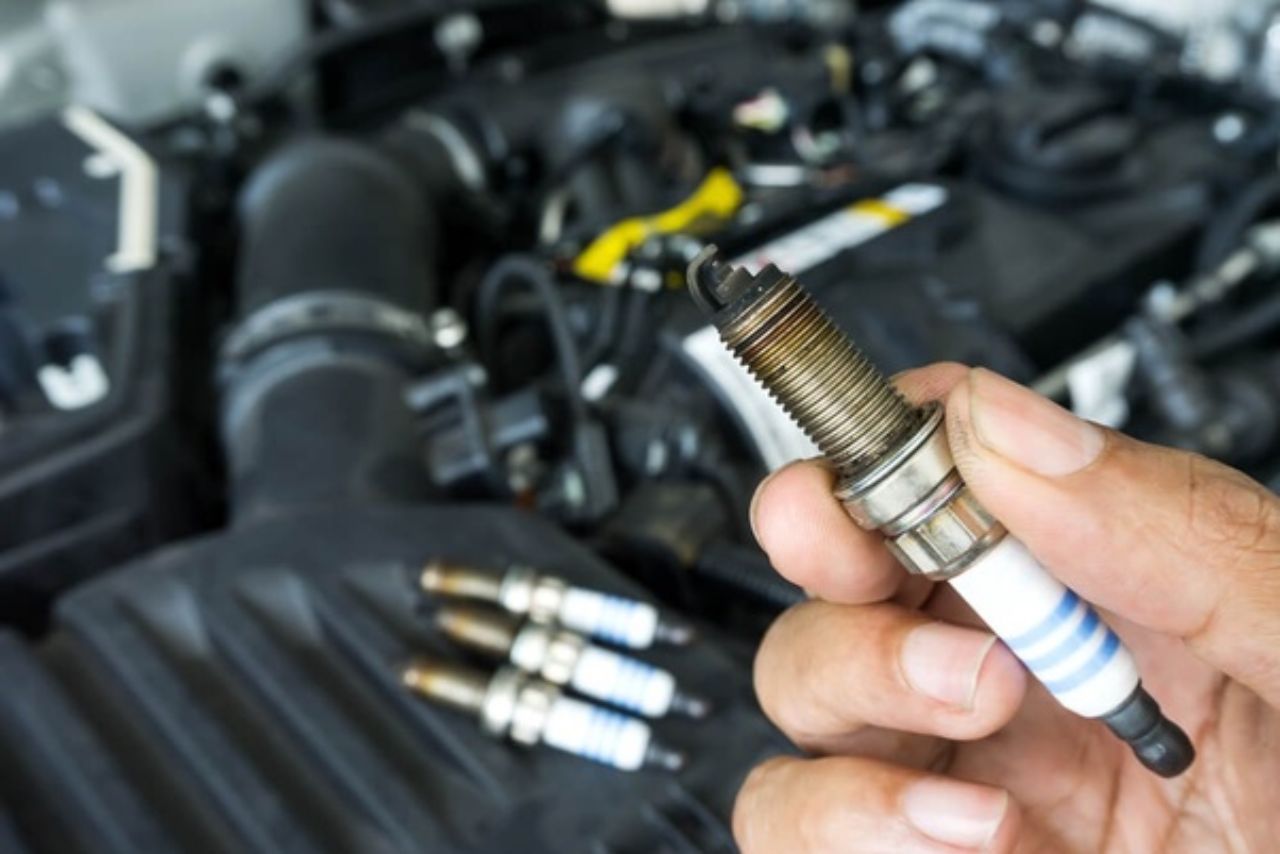Are you wondering How Tight Should Spark Plugs Be? The answer is not as straightforward as you might think.
Properly tightening spark plugs is crucial for engine performance and longevity, but it’s important to understand the factors that affect tightness and the recommended torque settings for your specific vehicle.
In this article, we’ll delve into the world of spark plug torque and give you the information you need to ensure your spark plugs are tightened to the right specifications.
We’ll also cover common mistakes to avoid when tightening spark plugs and share some tips for properly tightening them. Whether you’re a seasoned mechanic or a DIY enthusiast, this article will help you achieve optimal performance from your engine.
Understanding Spark Plug Torque
You’ll want to make sure your spark plugs are tightened to the correct torque to avoid any potential engine damage.
Torque is the amount of force required to turn an object, and in this case, it refers to the force used to tighten the spark plug into the engine cylinder head.
The proper torque for a spark plug is determined by the manufacturer and can vary depending on the type of engine.
It’s important to use a torque wrench when tightening spark plugs to ensure that you are applying the correct amount of force. If the spark plug is not tightened enough, it can cause a loss of compression and misfiring in the engine.
On the other hand, if the spark plug is tightened too much, it can damage the threads in the cylinder head and make it difficult to remove the spark plug in the future
How Tight Should Spark Plugs Be?
The correct torque spec for spark plugs can vary depending on the make, model, and year of your vehicle. It is always best to consult your vehicle’s owner’s manual to find the correct torque spec for your spark plugs.
Spark plugs should be tightened until they are snug, but not so tight that they are difficult to remove. You can usually tighten them by hand until they are snug, and then use a torque wrench to give them an additional 1/8 to 1/4 turn.
If you overtighten your spark plugs, you can damage the threads in the cylinder head, which can be very expensive to repair.
Here are some tips for tightening spark plugs:
- Use a torque wrench to ensure that you are tightening the spark plugs to the correct torque spec.
- Do not overtighten the spark plugs.
- If you are not sure how tight to tighten the spark plugs, consult your vehicle’s owner’s manual.
Here are some of the problems that can occur if spark plugs are not tightened correctly:
- Misfires: If spark plugs are not tightened correctly, they can cause misfires. Misfires can lead to poor fuel economy, decreased engine power, and increased emissions.
- Engine damage: If spark plugs are overtightened, they can damage the threads in the cylinder head. This can require expensive repairs.
- Leaks: If spark plugs are not tightened correctly, they can leak. Leaks can cause engine problems, such as misfires and decreased fuel economy.
It is important to tighten spark plugs correctly to prevent these problems. If you are not comfortable tightening spark plugs yourself, you can always have a mechanic do it for you.
Factors That Affect Spark Plug Tightness
One factor affecting the snugness of the ignition components is the level of torque applied during installation. The torque level should be precise because it can affect the performance of the engine.
If the spark plug is too loose, it can cause misfires, reduce fuel efficiency, and damage the engine. On the other hand, if it is too tight, it can damage the threads of the cylinder head and cause difficulty in removing the spark plug during future maintenance.
Aside from the torque level, other factors that affect spark plug tightness include the spark plug’s material, size, and shape, the cylinder head’s material, and the gasket’s quality.
The spark plug must be made of high-quality materials to withstand the heat and pressure inside the combustion chamber. The cylinder head should also be made of a durable material that can withstand the tightening force of the spark plug.
Lastly, the gasket must be of high quality to ensure a proper seal between the spark plug and the cylinder head.
Recommended Torque Settings for Spark Plugs
To achieve the best engine performance, it is crucial to use the recommended torque settings when installing the spark plugs.
The torque settings vary depending on the make and model of your vehicle, and it is important to consult your owner’s manual or a trusted mechanic to ensure that you are using the correct settings.
Over-tightening or under-tightening the spark plugs can lead to a host of problems, including damaged threads, stripped cylinders, or even engine misfires.
By following the recommended torque settings, you can ensure that the spark plugs are properly secured and will function optimally, providing the best possible performance for your engine.
Common Mistakes to Avoid When Tightening Spark Plugs
Avoiding common mistakes when tightening your vehicle’s spark plugs can prevent costly damage to your engine. One of the most common mistakes is over-tightening the spark plugs.
It might seem like a good idea to tighten them as much as possible, but this can actually cause the threads on the spark plug and in the cylinder head to strip, leading to expensive repairs.
Another mistake is cross-threading the spark plug. This happens when the spark plug is not properly aligned with the cylinder head threads and is forced in at an angle.
Cross-threading can damage the threads on both the spark plug and the cylinder head, making it difficult or impossible to remove the spark plug in the future.
To avoid these mistakes, make sure to use a torque wrench to tighten the spark plugs to the manufacturer’s recommended torque settings and always start threading the spark plug by hand to ensure proper alignment.
Watch Video: How Tight Should Spark Plugs Be?
Tips for Properly Tightening Spark Plugs
When you’re tightening your vehicle’s spark plugs, it’s important to follow these helpful tips to ensure a smooth and hassle-free process.
First of all, always make sure that the spark plug threads are clean and free of debris before installation. This can be achieved by using a thread chaser or compressed air to blow out any dirt or grime that may have collected over time.
Secondly, when tightening the spark plug, it’s important to use a torque wrench to ensure that the plug is tightened to the manufacturer’s recommended specification.
Over-tightening or under-tightening the spark plug can lead to engine issues such as misfires or even damage to the engine itself.
Using a torque wrench will provide an accurate measure of the force being applied and prevent any potential problems down the road.
Frequently Asked Questions
Can Spark Plugs Be Too Tight?
Yes, spark plugs can be too tight. Over-tightening can damage the threads in the engine’s cylinder head and make it difficult to remove the plug in the future.
It’s important to follow the manufacturer’s recommended torque specifications.
How Often Should Spark Plugs Be Checked for Proper Tightness?
Spark plugs should be checked for proper tightness every 30,000 miles or as recommended by the manufacturer.
Failure to do so can result in engine misfires and damage to the spark plug threads.
What Happens if Spark Plugs Are Not Tightened Enough?
If spark plugs are not tightened enough, they may loosen and cause misfires or damage to the engine.
It’s important to follow the manufacturer’s specifications for torque when installing spark plugs to ensure proper performance and longevity.
Can Using a Torque Wrench Damage Spark Plugs?
Using a torque wrench won’t damage spark plugs as long as the correct torque setting is used.
It’s important to follow the manufacturer’s recommendations to prevent over-tightening or under-tightening, which can lead to engine problems.
Is It Necessary to Use Anti-Seize Compound when Installing Spark Plugs?
It’s not necessary to use anti-seize compound when installing spark plugs. However, it can make future removal easier.
Always refer to the manufacturer’s torque specifications and avoid over-tightening to prevent damage.
Bottom Line: How Tight Should Spark Plugs Be?
Understanding the proper torque settings for spark plugs is crucial for ensuring optimal engine performance. Factors such as the type of spark plug, thread length, and cylinder head material can all affect the tightness required.
It is recommended to always refer to the manufacturer’s specifications when tightening spark plugs.
Common mistakes such as over-tightening or under-tightening can lead to damaged threads, misfires, and other engine problems.
By following the recommended torque settings and avoiding these common mistakes, you can ensure that your spark plugs are tightened to the proper level and your engine runs smoothly.
Remember to always take the time to properly tighten your spark plugs and consult a professional if you are unsure about the process.




